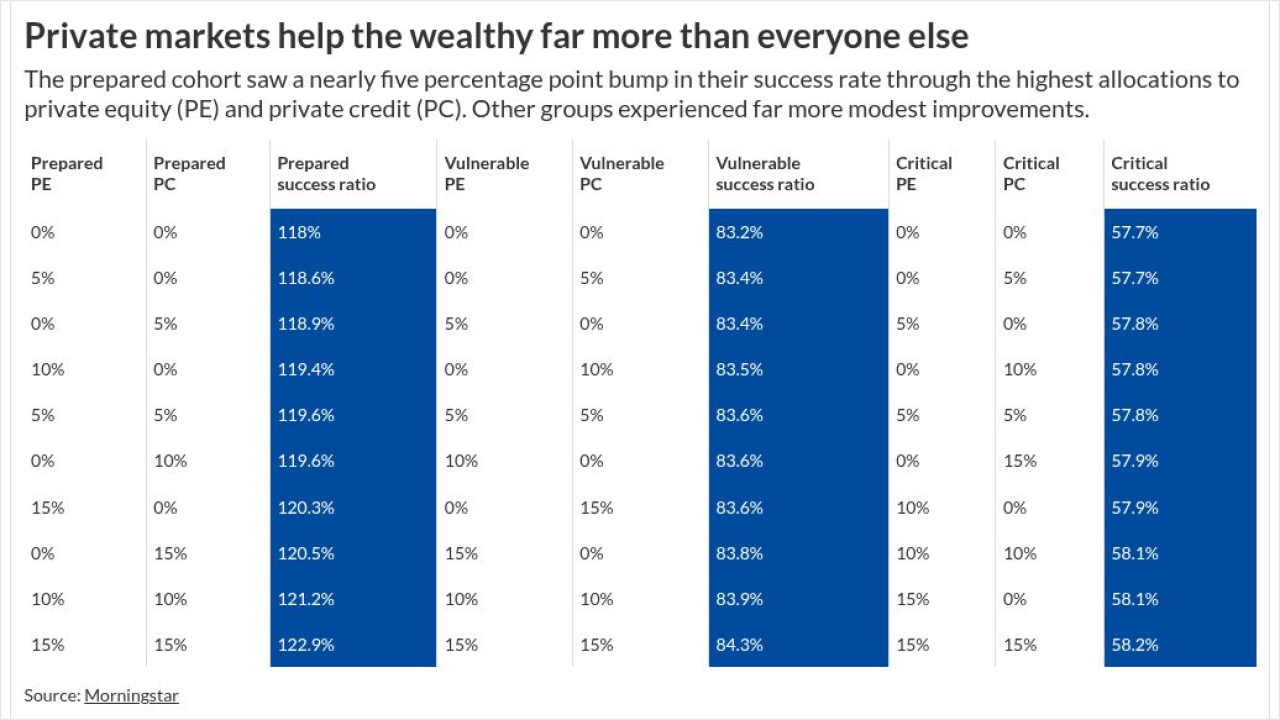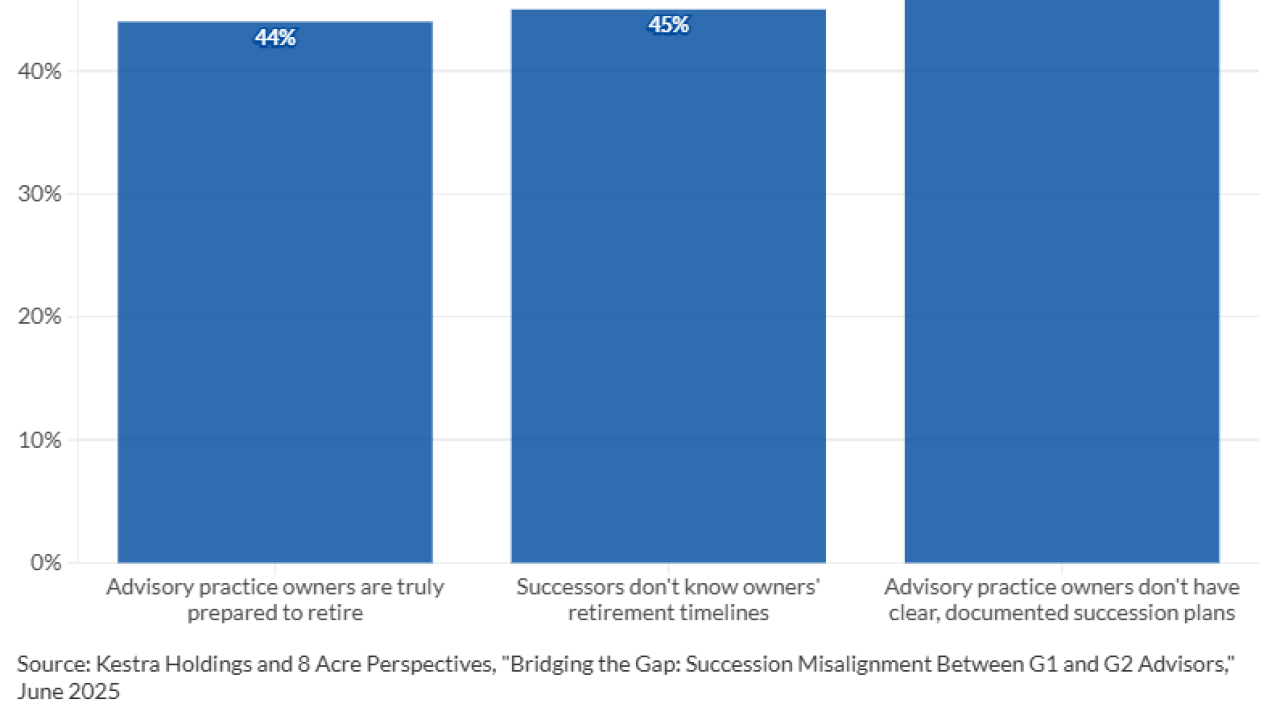The U.S. dollar has been on a tear, soaring to multiyear highs against a basket of other major currencies. In 2014, the U.S. Dollar Index (DXY) rose 12.8%, and in early 2015 the dollars formidable strength continues to be a major theme.
"We see increasing strength in the dollar as a long-term trend," says Brian Andrew, president and chief investment officer at Cleary Gull, an investment advisory firm in Milwaukee.
Factors supporting a continued climb include relatively high U.S. economic growth and interest rates compared with other developed markets, as well as a shrinking U.S. trade gap. This is reminiscent of the not-too-distant past: The dollar enjoyed sustained superiority from 1979 to 1985, and again from 1995 to 2002.
No one knows how long the dollar will continue to ascend, but ongoing strength is a possibility for advisors to consider. What would this mean for clients? Some answers seem straightforward, while others are not so clear.
FAVORING FOREIGN EQUITIES
Perhaps the major area of disagreement lies in the equities market: Should clients raise or lower their exposure to foreign stocks?
"We think foreign stocks are among the most attractive places to invest," says Chris Cordaro, chief investment officer at RegentAtlantic Capital in Morristown, N.J. "As the dollar becomes stronger, U.S. goods and services become less competitive in foreign markets, while European goods and services are now on sale."
Cordaros firm recently produced an "international diversification deck" to explain to clients its overweight position in foreign stocks. The presentation highlights the lower valuations of international equities compared with U.S. issues, and provides additional reasons for investing abroad.
RegentAtlantic points out that foreign stocks outperformed U.S. equities in 1985 to 1989, and 2003 to 2007, right after those previous periods of dollar dominance. "We base our outlook on the more expensive dollar being an impediment to profit growth here and a boost to everyone else," says Andy Kapyrin, director of research and partner at RegentAtlantic. "If the dollar continues to get stronger, that would delay the day when foreign investments begin to really outperform."
For now, Kapyrin adds, foreign companies may have a "huge boost in competitiveness" if theyre paying for labor and other production costs with devalued currencies.
STICKING CLOSE TO HOME
Yet other advisors argue that foreign stocks will recede in appeal as the dollar ascends. A strong dollar reflects a relatively strong economy, which can boost domestic corporate profits and stock prices. Investors here and abroad are likely to prefer making money in appreciated dollars rather than in devalued euros or yen, so cash may flow here and stay here, the argument goes. A bolstered dollar inhibits inflation, as can already be seen in lower oil prices.
Schwab has tracked the U.S. dollar from 1978 to 2011, finding five bull and five bear markets of varying lengths. During the five dollar bull markets, the average gain for the S&P 500 was 58.9%, versus an average gain of 31.4% in the five dollar bear markets. The largest equities gains came in the longest dollar bull markets, while stocks lost ground during the two shortest dollar bull markets.
Willie Delwiche, an investment strategist at Robert W. Baird, says his firm has been reducing its holdings of international equities and expanding its U.S. equities exposure for some clients.
"For some tactical portfolios we manage, weve gone from a benchmark weight in foreign equities to about a half-benchmark weight," he says. "We use blended benchmarks. Where tactical equity and tactical allocation portfolios are benchmarked 30% and 20% to the MSCI World ex-USA Index, respectively, now we only have 14% and 10% exposure to international stocks."
Yet Baird is "not yet fully on board with a more widespread move from foreign to domestic stocks, he says. "Historically, small-caps have outperformed large-caps when the dollar is strong," he explains. "Small-caps tend to have more of a U.S. focus, so they typically receive less revenue from overseas and are not as affected by weakness in other currencies. However, that hasnt been the case recently. If we see a more normal pattern, well increase holdings of domestic stocks, including small-caps."
FIXED-INCOME EDGE
On the fixed-income side, the advantage of U.S. issues may be more apparent.
"U.S. interest rates even at current paltry levels are significantly higher than those in core European countries or Japan, making the dollar more attractive," Kathy Jones, fixed-income strategist at Schwab Center for Financial Research, wrote in a recent paper.
Worldwide yields probably will stay low, she says, so U.S. bonds are likely to outperform bonds from developed countries and emerging markets. In the domestic fixed-income market, Jones favors bonds with maturities in the five- to 10-year range.
"They can be investment-grade corporate or municipal bonds, or Treasuries for investors who want more safety," she says. Were negative on high-yield bonds; in our view, taking credit risk doesnt make sense now. Jones also is downbeat on commodities, including oil. There is excess supply, but OPEC has not turned off the spigot," she says. So prices could go lower."
How are other advisors reacting to the prospect of a beefed-up dollar? "We have decided against making wholesale changes to our clients' portfolios," says ReKeithen Miller, client-service manager in the Atlanta office of Palisades Hudson Financial Group. Instead, weve been doing things at the margin to take advantage of the situation."
One of those moves was taking capital losses in energy funds in late 2014. "One obvious result of the stronger U.S. dollar," says Miller, "was a fall in oil prices from over $100 a barrel to below $60, in a few months. This hurt the performance of energy-related equities in our clients portfolios."
After taking losses, Millers firm reinvested the proceeds in comparable funds. "We are using this opportunity to rebalance our clients' portfolios," he says, so clients can take advantage of any recovery. ... In the majority of cases we are increasing allocations, since energy funds have underperformed."
CURRENCY PLAYS
Cleary Gulls Andrew sees opportunity in currency volatility. "We have moved some assets to managers with strategies where a significant portion of the returns can be attributed to currency plays, if the managers have shown theyre good at it," he says.
Such strategies can include dealing in currency futures and options as well as deciding whether or not to hedge foreign securities, Andrew adds. He says his firm has made such moves for about 12% to 15% of his firms fixed-income assets and 5% to 6% of holdings in its complement strategy group," which can include liquid alts.
Miller's firm is also evaluating currencies. "Were weighing whether to hedge the foreign currency exposure of our international holdings. We've never done so, he says, because we like the diversification benefit foreign currency exposure can provide. However, if we conclude structural reforms in Japan are unlikely, we might invest in funds that hedge exposure to the yen.
Donald Jay Korn is a Financial Planning contributing writer in New York. He also writes regularly for On Wall Street.
Read more:





